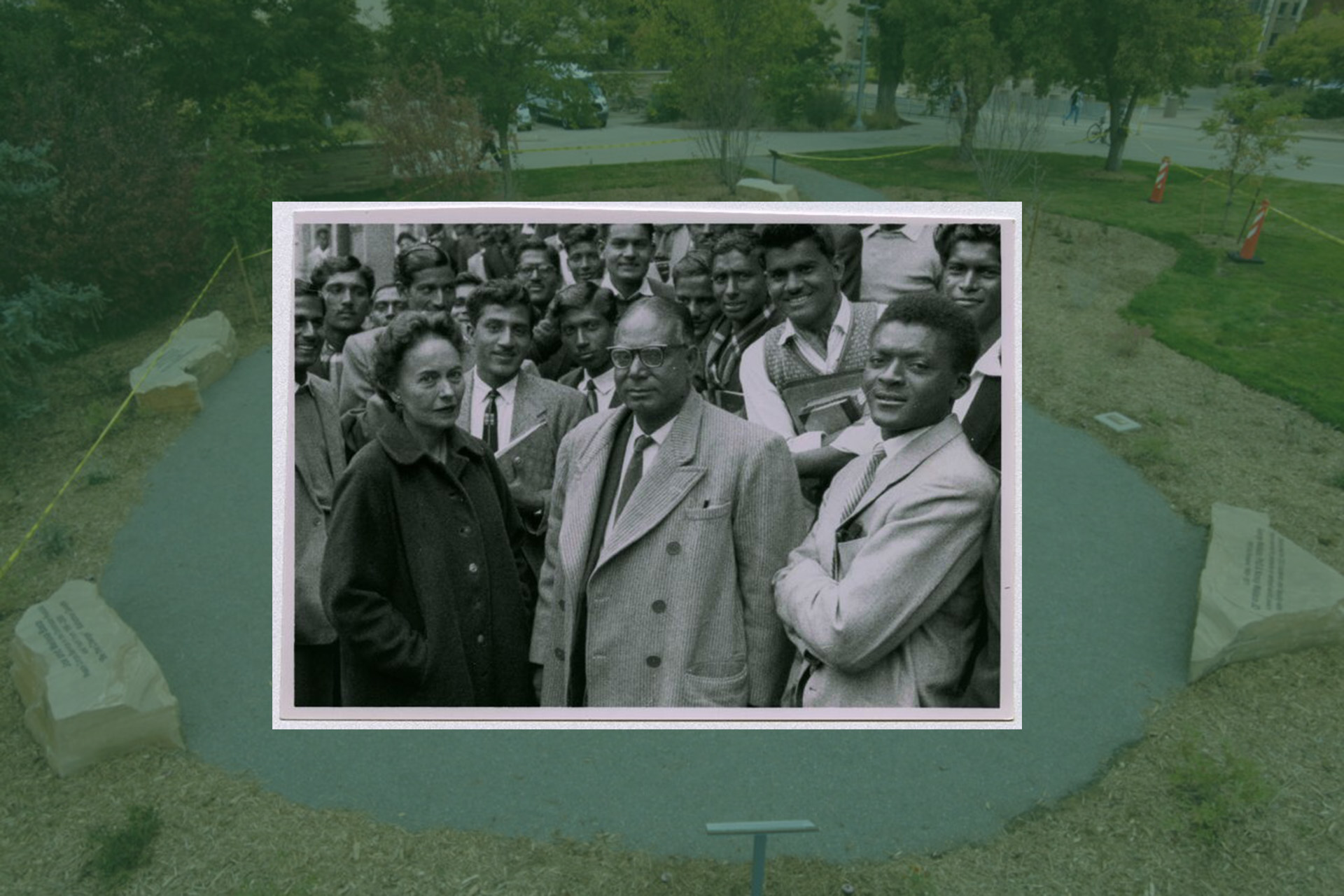
Pauline Birky-Kreutzer had a habit of getting things done with a balance of determination and diplomacy as a research associate at Colorado State University.
She was the one who was counted on to put it together and get it going.
Her skills helped create a Congressional Feasibility Study of the Point Four Youth Corps and transform that plan into what we know today as the Peace Corps. Birky-Kreutzer worked closely with Maurice “Maury” Albertson in her time at CSU – and the two would work together to put a campaign promise from John F. Kennedy into action.
“Pauline was truly the pioneer and mother of the Peace Corps,” Albertson wrote in the foreword of Birky-Kreutzer’s book, Peace Corps Pioneer. “She was trained in home economics and community organization, which gave her the background needed to do the yeoman work to accomplish the study that became the design of the Peace Corps.”
She was the one that Albertson turned to when he needed help delivering.
“Maury was an idea guy,” said Ann Savageau, Birky-Kreutzer’s daughter, who is professor emerita of design at the University of California-Davis. “Maury was a larger-than-life character. He had more thoughts, ideas and enthusiasm than most people put together. So, my mother became very helpful.”
Early life
Birky-Kreutzer was born in 1915 and grew up on a farm in central Illinois. Her parents were thrifty, hardworking people who were very supportive of education, and Birky-Kreutzer became the first in her family to earn a college degree, Savageau said. She graduated from the University of Illinois, where she had met her husband, Carl Birky.
Birky-Kreutzer worked for the Farm Home Administration, teaching women about childcare, nutrition and more. That experience underpinned her long career.
Savageau’s brother had severe asthma, so the family moved to Colorado and Carl took a job at Colorado A&M, now CSU.
“Pauline was truly the pioneer and mother of the Peace Corps. She was trained in home economics and community organization, which gave her the background needed to do the yeoman work to accomplish the study that became the design of the Peace Corps.”
—Maurice “Maury” Albertson, Peace Corps Pioneer
“Our friendship with the Albertsons goes way back to the 1940s, just after war,” Savageau said. “We met the Albertsons, who were living in a post-war Quonset hut at the time. Maury and Dottie were good friends with Pauline and Carl.”
(Their couples’ friendship was so strong that they joined a group of other university professors to purchase the Stanley Hotel in Estes Park.)
Work in the Middle East
In 1956, Birky took a U.S. State Deptartment job with the Near East Foundation, doing community development work in the Middle East. His boss’ wife oversaw community development work in villages with women. She found Birky-Kreutzer and put her to work in Iranian villages.
After Iran, they came back to Fort Collins, where Maury Albertson was pursuing a coveted State Department grant to develop the Point Four program that would be come the Peace Corps.
When the grant was awarded to the Colorado State team, Albertson and Birky-Kreutzer got to work. They had just $10,000 to travel to three continents. Always thrifty, they would fly overnight and work during the days to minimize the need for lodging.
“They were very clever about maximizing opportunities,” Savageau said. “Very few places would do such a project on $10,000.”
Her mother was full of stories of the fascinating people she had met along the way – and of some who were not too easy to get along with.
“My mother was quite adept at handling tough situations and people,” Savageau said. “She had a lot of different people she had to work with and get along with in the federal government. She learned to navigate all of that.”